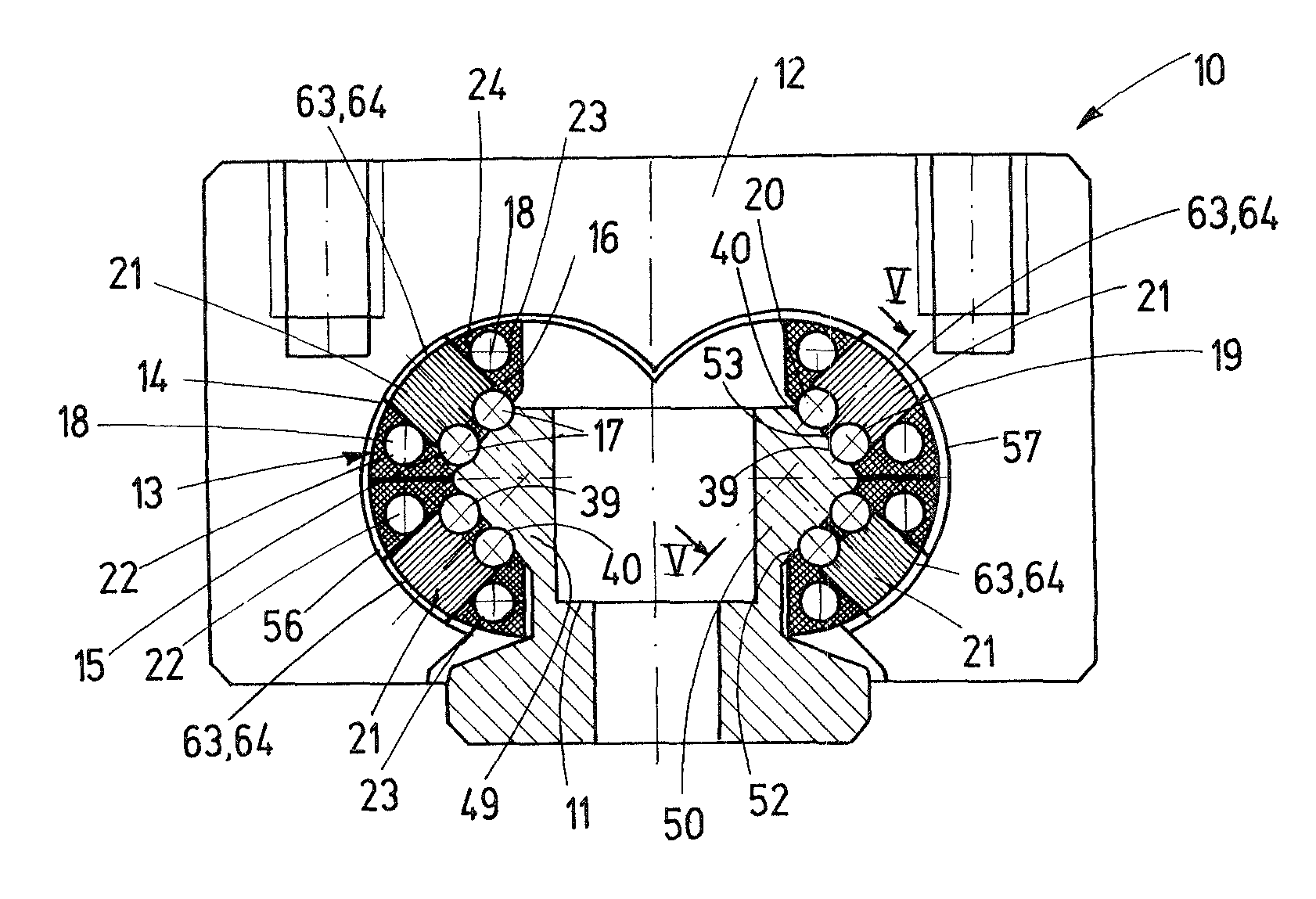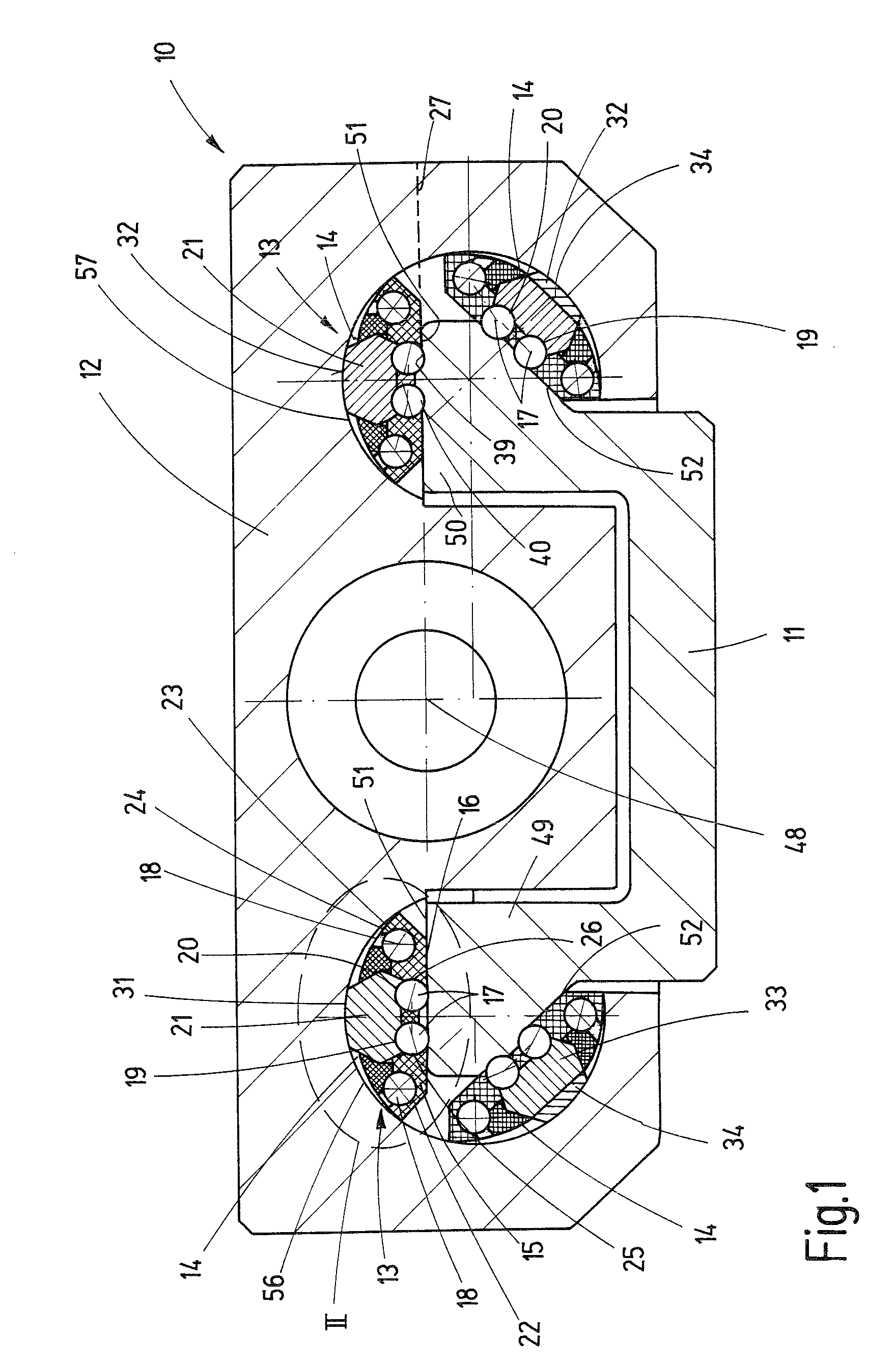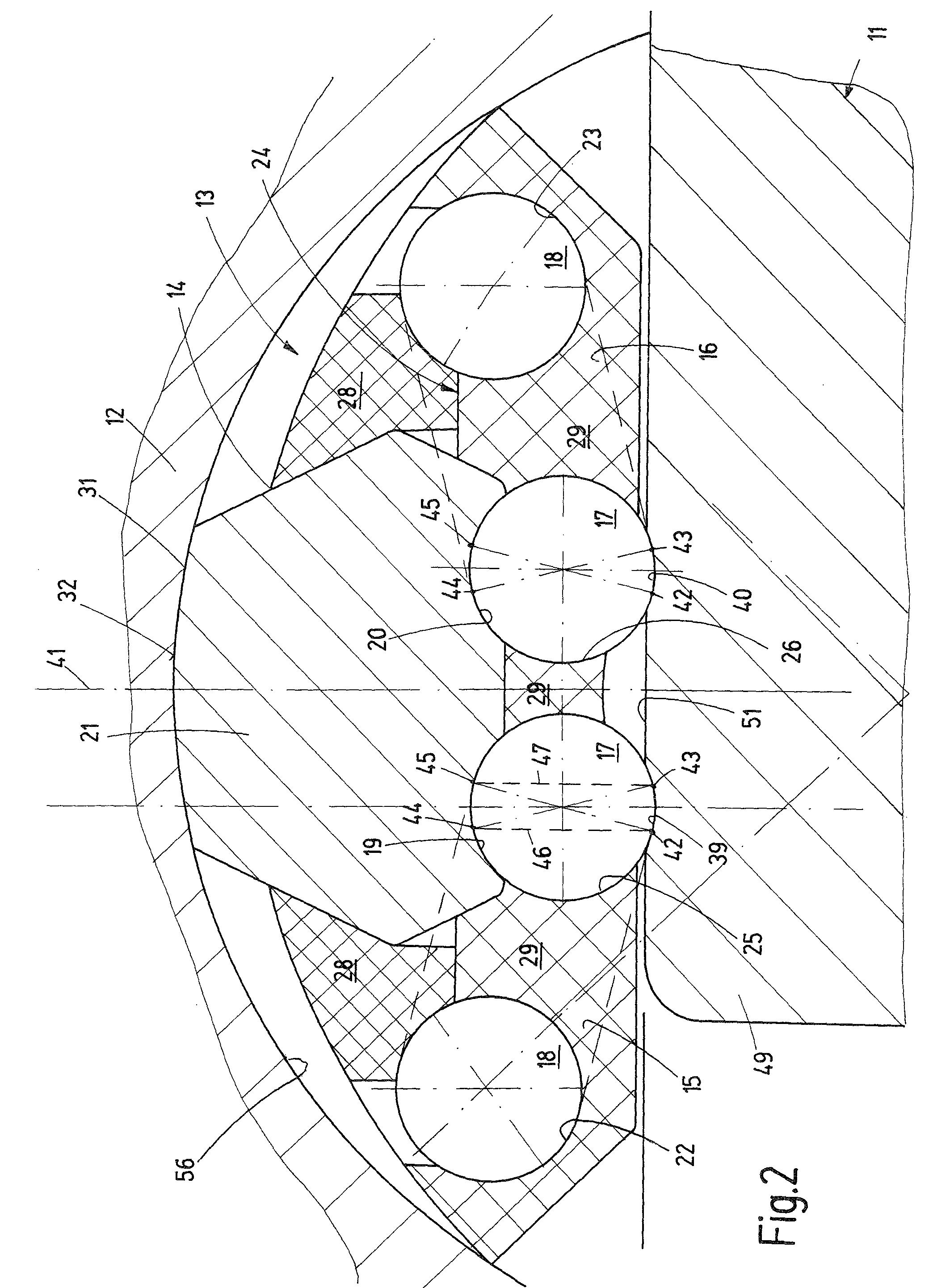Linear roller bearing element
a technology of roller bearings and elements, applied in the direction of sliding contact bearings, linear bearings, bearings, etc., can solve the problem of little installation space and achieve the effect of reducing nois
- Summary
- Abstract
- Description
- Claims
- Application Information
AI Technical Summary
Benefits of technology
Problems solved by technology
Method used
Image
Examples
Embodiment Construction
[0023]FIGS. 1 and 2 are schematic depictions of a linear roller bearing guide 10 with a guide carriage 12 or the like supported on a guide rail 11 such that it is displaceable relative thereto; at least one linear roller bearing element 13—in the form of an independent, ready-to-install raceway element 14—is located between guide rail 11 and guide carriage 12, in order to guide the guide carriage 12.
[0024]Special features of the at least one roller bearing element 30—raceway element 14 in particular—are explained in greater detail below with reference to FIGS. 1 through 9.
[0025]Linear roller bearing element 13 is designed such that it includes two endless rolling element channels 15 and 16—which transition into each other steplessly along the channel—for load-bearing rolling elements 17 and non-load-bearing rolling elements 18. In this case, rolling elements 17, 18 are composed of balls, which preferably have a relatively small diameter. Every rolling element channel 15, 16 is compo...
PUM
 Login to View More
Login to View More Abstract
Description
Claims
Application Information
 Login to View More
Login to View More - R&D
- Intellectual Property
- Life Sciences
- Materials
- Tech Scout
- Unparalleled Data Quality
- Higher Quality Content
- 60% Fewer Hallucinations
Browse by: Latest US Patents, China's latest patents, Technical Efficacy Thesaurus, Application Domain, Technology Topic, Popular Technical Reports.
© 2025 PatSnap. All rights reserved.Legal|Privacy policy|Modern Slavery Act Transparency Statement|Sitemap|About US| Contact US: help@patsnap.com



